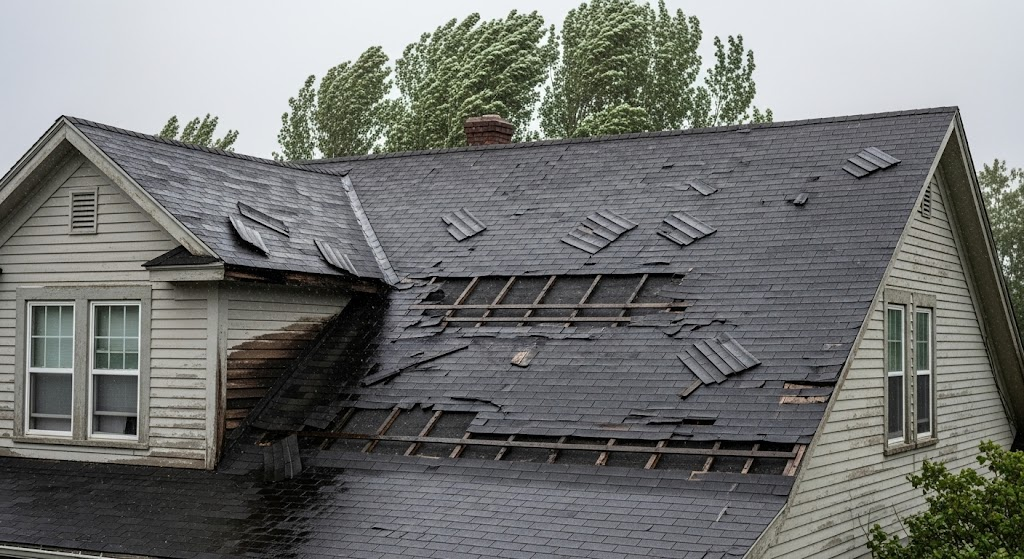If you’ve noticed missing shingles on your roof, you’re probably wondering what to do next.
It’s important to address this issue quickly before it leads to bigger problems like leaks or water damage.
I’m here to help you with exactly what needs to be done right now to protect your home. First, we’ll talk about how to spot the damage and what steps to take immediately.
I’ll also share simple tips on how to prevent future issues and when it might be time to think about replacing the entire roof.
I understand how stressful roof problems can be, but don’t worry, you’ve got this.
By the end, you’ll know exactly how to act fast and keep your home safe.
I’ll make sure you feel confident and informed so you can handle the situation without the stress.
Why Missing Shingles Are a Concern
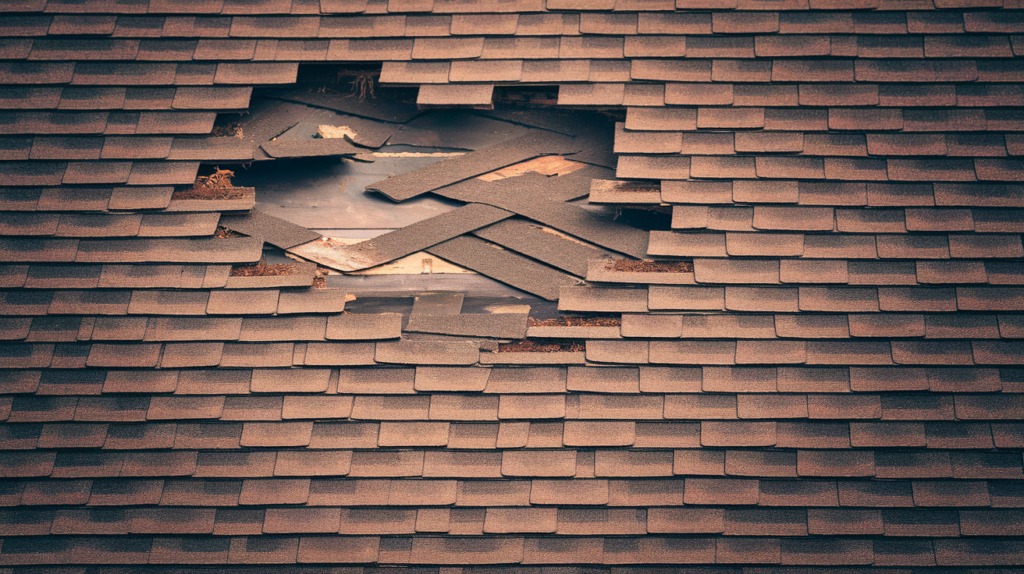
Missing shingles might seem like a small issue, but they can lead to big problems if not addressed quickly.
Shingles are your roof’s first line of defense against weather, like rain, snow, and wind. When one or more shingles are missing, it leaves your roof vulnerable to water leaks and damage.
Over time, this can cause mold, rotting wood, and even damage to your home’s walls and ceilings. The longer you wait, the more it can cost to fix.
Plus, if water seeps through the missing shingles, it can affect your attic and insulation, making your home less energy-efficient.
That’s why it’s important to act fast. Taking care of missing shingles now will help protect your roof and home from bigger issues down the road, saving you both time and money.
How to Spot Missing Shingles and Roof Damage
Regularly check your roof for missing shingles or damage to catch problems early. Below are a few simple ways to inspect your roof:
1. Visual Inspection from the Ground
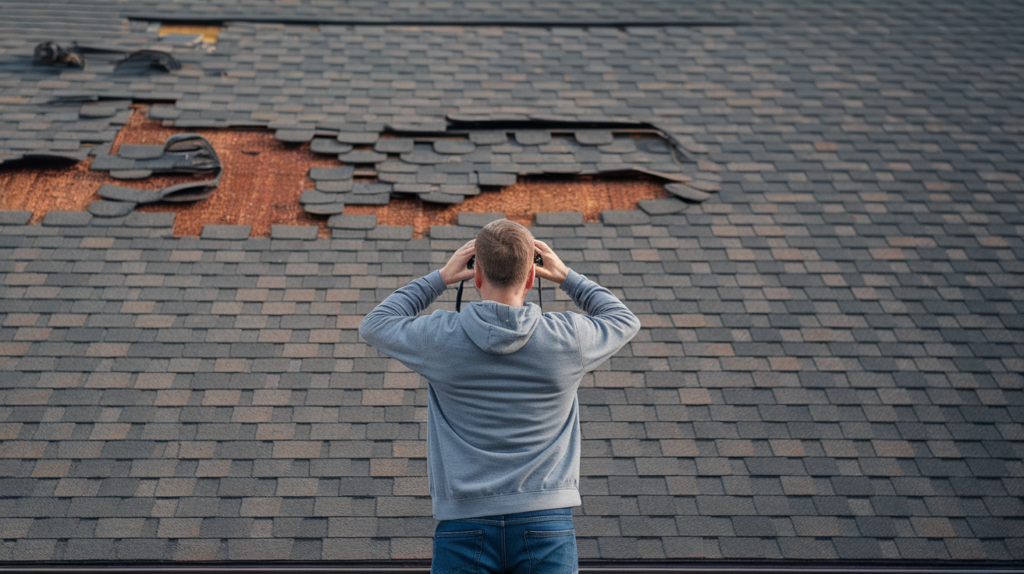
One of the easiest ways to spot missing shingles is by visually inspecting your roof from the ground.
Grab a pair of binoculars and look closely at your roof. Focus on areas where shingles might be missing, especially near the edges or around vents.
You might notice gaps where shingles used to be or areas where the color looks different.
Sometimes, shingles can curl up or get torn off completely, leaving exposed parts of your roof.
This quick check can help you find small issues before they turn into bigger problems.
2. Check Gutters and Downspouts
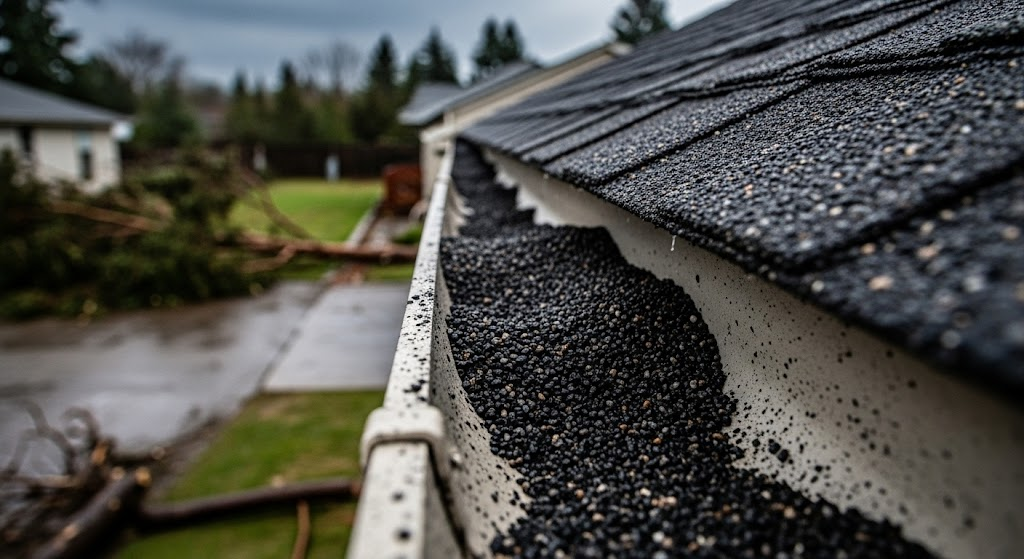
After a storm or strong winds, it’s a good idea to check your gutters and downspouts. Shingle granules often wash off the roof and collect in your gutters.
These tiny bits of material are signs that your shingles are deteriorating.
If you find a lot of granules in the gutters, it could mean that your shingles are wearing down and may be more likely to fall off.
Keeping an eye on your gutters can help you spot roof damage early, so you can fix it before it causes bigger issues.
3. Inspect the Attic and Ceilings
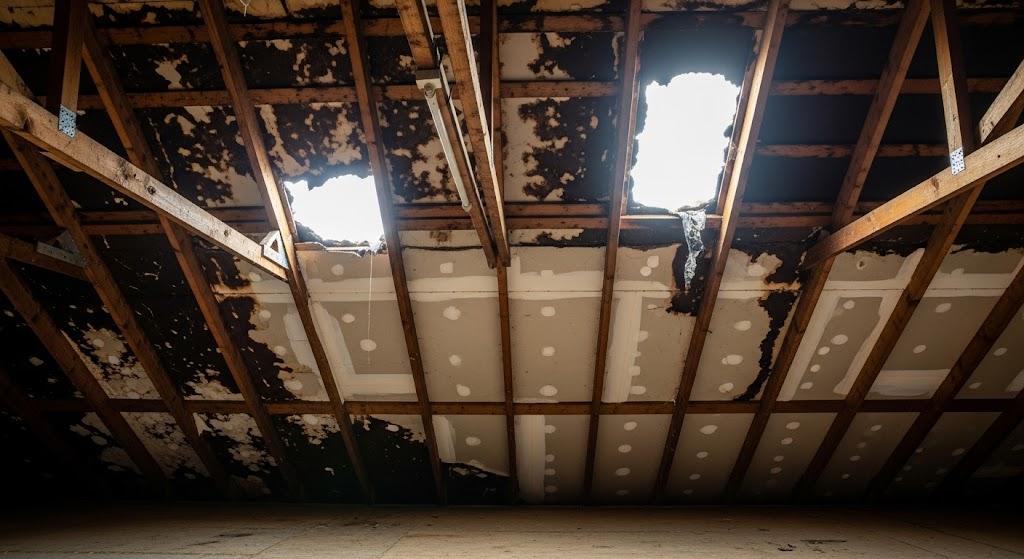
Another important step in spotting missing shingles is to check inside your home. Go into your attic and look for any signs of water damage.
If you see any daylight shining through your roof or notice water stains on the ceiling, it’s a clear sign that your roof is leaking.
Water damage in the attic is usually caused by missing shingles that let rain or snow in.
If you notice any of these signs, it’s important to act quickly and call a professional to fix the roof before more damage occurs.
4. Inspecting Your Roof After a Storm
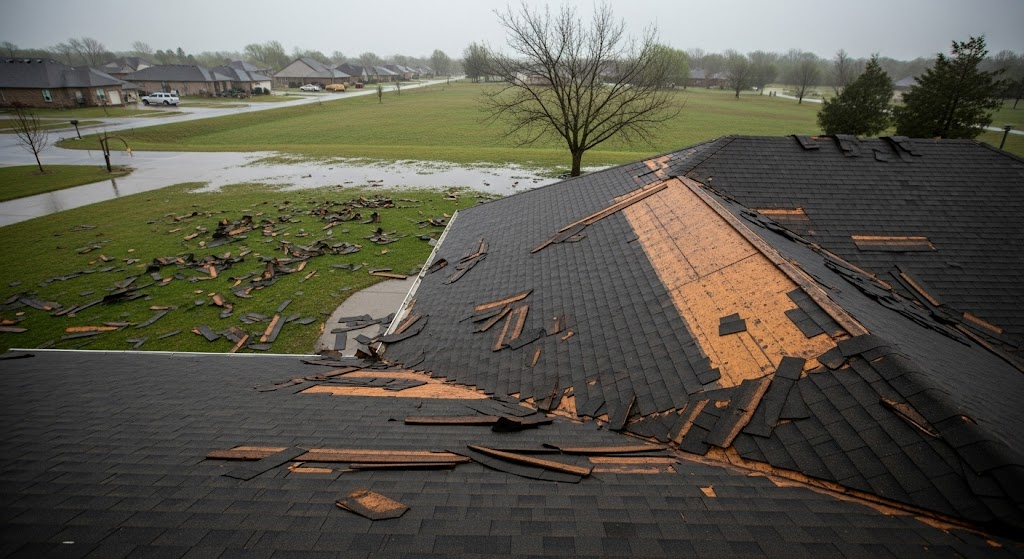
After a storm, always take the time to inspect your roof. Strong winds and heavy rain can easily lift shingles and cause them to fall off.
Walk around your yard and look for shingles that may have blown off. Check your roof to see if any areas look uneven or exposed.
Storms are a common cause of missing shingles, so inspecting your roof right after bad weather can help you catch problems early.
The sooner you spot missing shingles, the quicker you can get them repaired, preventing further damage to your roof and home.
Common Causes of Missing Shingles
Several factors can cause shingles to go missing. Below are some of the most common reasons:
- Severe Weather: High winds, hail, and heavy rain can tear or lift shingles, especially during storms.
- Age and Wear: Shingles become brittle and lose their adhesive quality over time, making them more prone to falling off.
- Poor Installation or Low-Quality Materials: Incorrect installation or cheap materials can cause shingles to detach early.
- Tree Damage or Animal Activity: Overhanging branches may scrape shingles, and animals like squirrels can damage or chew them.
Immediate Actions to Take When You Discover Missing Shingles
If you find missing shingles, it’s important to act quickly to prevent further damage. Here’s what to do:
- Stay Safe: Never climb onto the roof unless it’s safe. Use binoculars to inspect the damage from the ground.
- Temporary Fixes: If rain is expected and a roofer isn’t available, cover exposed areas with a tarp to prevent water damage. This is a short-term solution until repairs are made.
- Document the Damage: Take clear photos for insurance claims and future reference to ensure proper repair coverage.
Assessing the Extent of the Damage
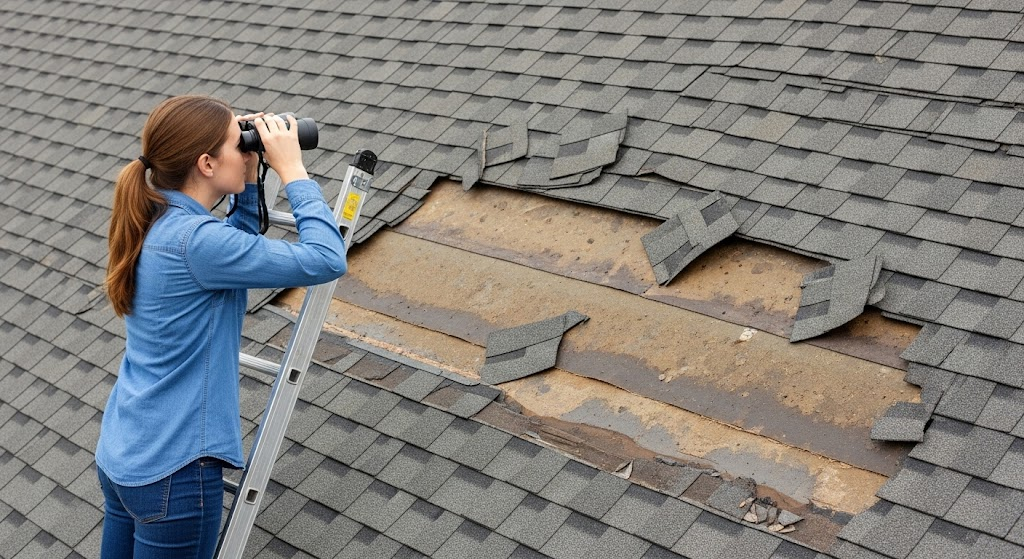
After noticing missing shingles, it’s important to assess the full extent of the damage.
Start by checking nearby shingles for any that are loose, cracked, or curling. These can be signs that more shingles may come off soon, so it’s good to catch them early.
Next, inspect your roof deck and attic for any signs of leaks or water damage.
If you see water stains or damp areas, it means that rain or moisture has likely been getting through the missing shingles.
Finally, determine whether the problem is isolated to just a few shingles or if multiple ones are missing.
If it’s a small number of shingles, the damage might be minor, but if several are missing, it could signal a larger issue that needs more attention.
Assessing the damage thoroughly will help you understand the scope of the repair needed.
When to Call a Professional Roofer
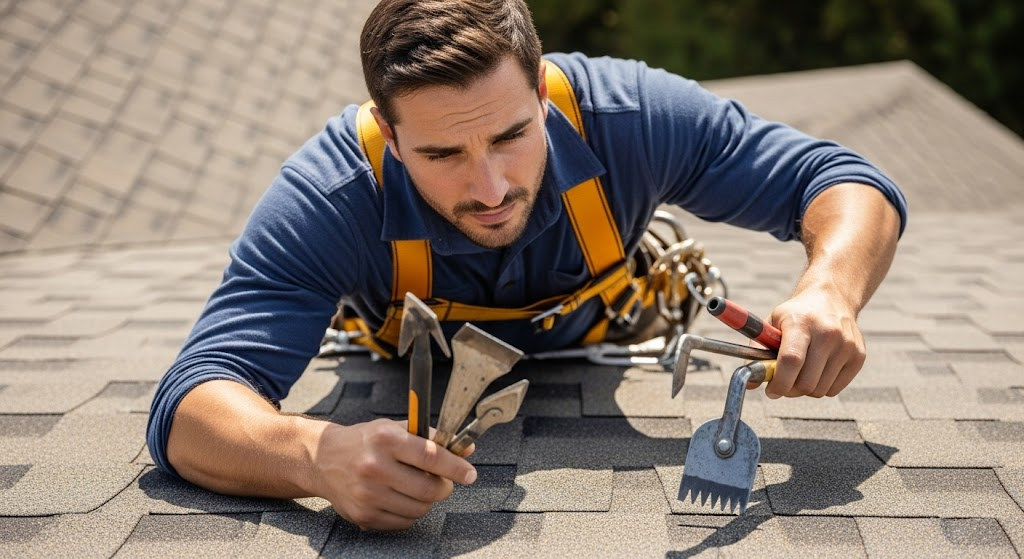
If you’re unsure about the extent of the damage or the safety of your roof, it’s best to call a professional roofer for a thorough inspection.
Roofers have the expertise to safely replace missing shingles and check for hidden damage that might not be visible to the untrained eye.
They can also advise if a full roof replacement is necessary based on the condition of your roof.
To avoid unexpected issues, consider scheduling regular roof inspections twice a year.
This will help catch problems early before they become more expensive and complicated to fix.
Risks of Ignoring Missing Shingles
- Water Leaks Leading to Rot, Mold, and Structural Damage: Missing shingles allow water to seep into the roof, causing rot and mold, and potentially weakening the structure of your home.
- Increased Risk of Further Shingle Loss and Escalating Repair Costs: Ignoring the issue can lead to more shingles coming loose, making repairs more expensive and complicated as time goes on.
- Potential for Interior Water Damage and Higher Insurance Claims: Water infiltration from missing shingles can lead to costly interior damage, including water stains, ceiling damage, and mold growth, which can result in higher insurance claims.
Preventing Future Roof Issues
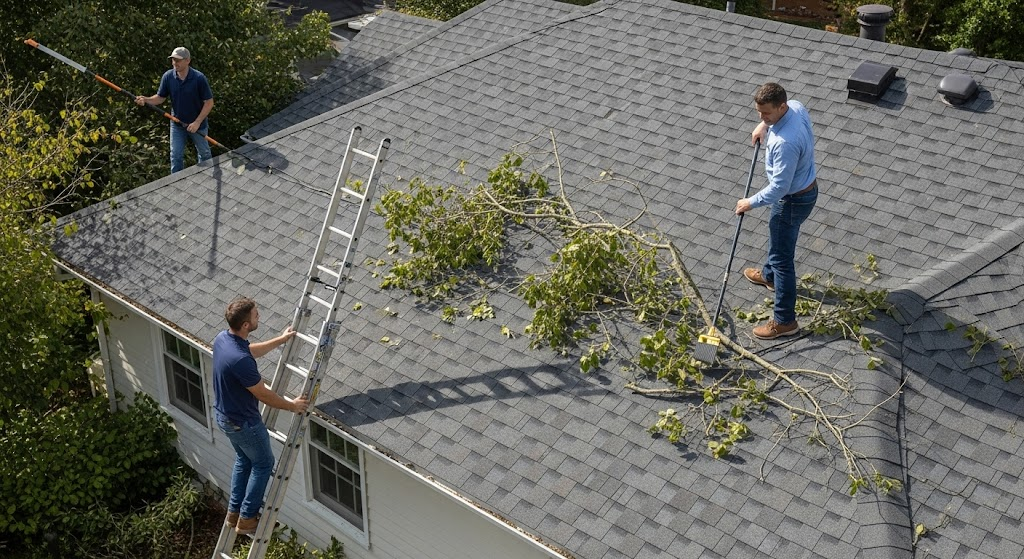
- Roof Inspections: Schedule regular roof inspections, ideally twice a year, to catch issues early before they lead to more serious damage.
- Regular Maintenance: Keep your roof clean by removing debris, leaves, and branches that could trap moisture and cause damage to shingles.
- Trim Overhanging Trees: Trim any overhanging branches that could scrape against the roof, loosen shingles, or cause damage over time.
- Timely Repairs: Address small issues promptly to avoid bigger problems. Timely repairs can extend the life of your roof and prevent costly fixes down the road.
Conclusion
Dealing with missing shingles quickly is essential for protecting your home.
If you notice any missing shingles, don’t wait-inspect the damage, cover exposed areas with a tarp if rain is coming, and call a professional roofer for a thorough check.
Ignoring the problem can lead to costly water damage, mold, and structural issues.
By staying on top of roof inspections and maintenance, you can prevent many of these problems and keep your roof in good shape for years to come.
Timely repairs not only save money but also help extend the life of your roof.
I hope this guide gives you the confidence to address missing shingles right away and take the proper steps to keep your home safe.
Your roof plays a big role in protecting your house, and taking care of it now will save you headaches down the road.

